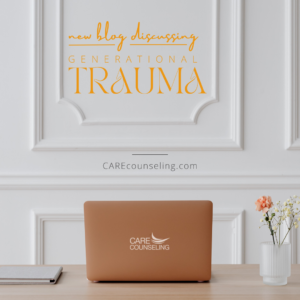 Seeking out the voices from individuals who research, work with, and live in marginalized, and underserved communities helps provide a model for healing from trauma that is more representative to needs of those who are impacted by collective, historical, and/or inter-generational trauma. Dr.-Maria-Yellow-Horse-Brave-Heart has identified four different stages of healing historical trauma in Native communities. These include confronting it, understanding it, releasing the pain of it, and transcending it.
Seeking out the voices from individuals who research, work with, and live in marginalized, and underserved communities helps provide a model for healing from trauma that is more representative to needs of those who are impacted by collective, historical, and/or inter-generational trauma. Dr.-Maria-Yellow-Horse-Brave-Heart has identified four different stages of healing historical trauma in Native communities. These include confronting it, understanding it, releasing the pain of it, and transcending it.
Confronting it
Many times, humans want to avoid things that are painful. Perhaps certain topics are never talked about in families because it is just too much. Maybe you are avoiding support or community connection, during times of suffering. When wanting to run away or hide, sometimes the thing that is needed most at that time is to confront it.
Buffalo are brave animals. They take care of the herd, especially the young and weak and face storms head-on. Did you know that buffalo will directly move through a storm rather than turning back or hiding until it is over? By doing so, they move through a difficult time more quickly than the other options by confronting the storm ahead.
Understanding it
Learn more about historical and intergenerational trauma to better understand it. Listen to the stories of the survivors. Educate yourself with resources that explore historical-trauma-and-cultural-healing from a variety of perspectives. Explore how your own historical background impacts how you interact with others and view the world. Understand how adverse childhood events (ACES) and-toxic-stress impact the mind-and body. Listen to your body’s signals to understand how you may be processing trauma.
Releasing the Pain of it
Be willing to accept support from others to begin the healing process for releasing the pain of it. Surround yourself with others who can join you on your journey to healing. This includes mentors and professional helpers who understand your historical and community context who can build strong alliances with others in the community around working with trauma and BIPOC mental-health. Normalizing mental health as a social justice issue can help people-of-color begin to de-stigmatize mental health care. “Healing” emotional wounds after something happened to me, my ancestors, or my community sounds very different than needing to go to “treatment” because there is something with me.
Transcending it
Integrating traditional community healing practices and trauma-informed treatment is one way of transcending it. Process thoughts, feelings, and experiences related to trauma, grief, and loss within the community, for a communal approach to healing. Coming together, individuals and groups can begin creating a new historical narrative for cultural-healing, as stories are shared. Standing in solidarity with those who are in pain and sharing in one’s pain can help promote healing. Providing safe spaces for the community and members of historically oppressed groups to reconnect to community and the strengths of ancestral roots is important. Celebrating culture and resiliency while also creating space for healing circles can provide a meaningful space for the current generations to heal.
Written By : Charlotte Johnson, MA, LPCC
We’re Here to help
Our wellness experts will be happy to take care of you. You can CLICK HERE to schedule an appointment now or call (612)223-8898.
Meet Clinicians
We’re united by our commitment to providing effective, relevant, and innovative mental health support at all stages of your journey. Click Here to find out more about who we are, where we come from, and how we live out CARE’s mission every day.
The professionals at CARE are actively collecting and creating resources to help with what you need. We’re Here for You.



